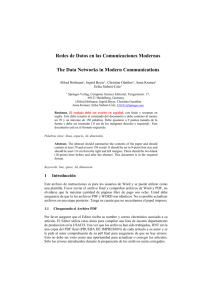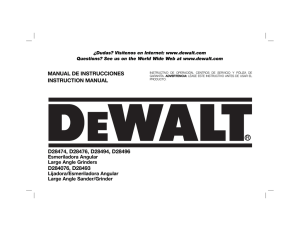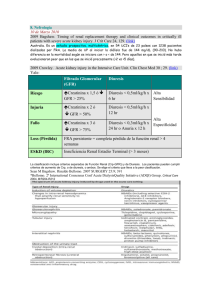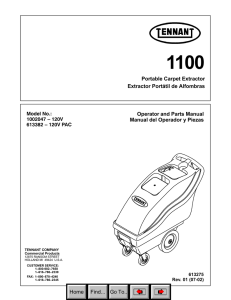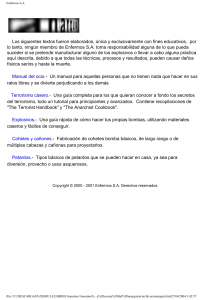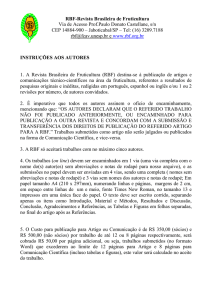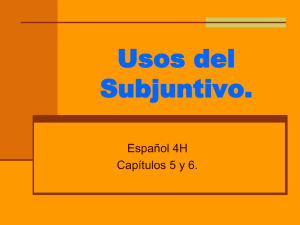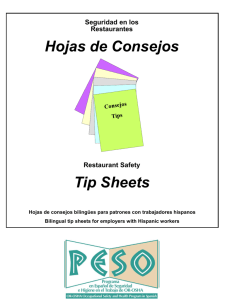Grounding Electrical Equipment
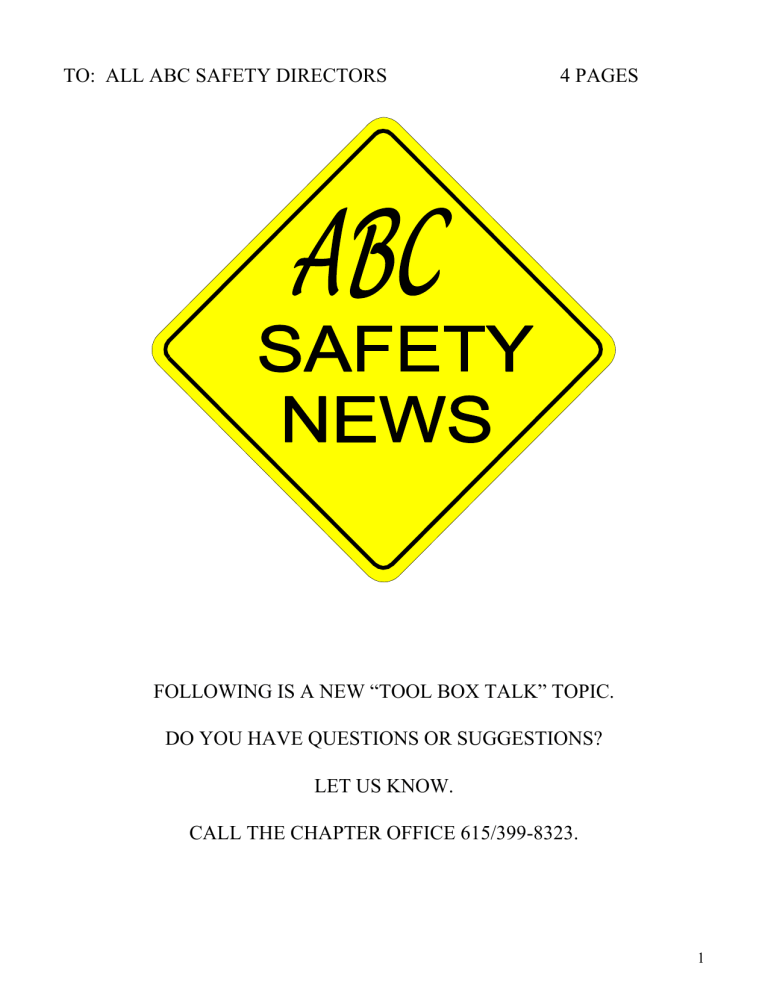
TO: ALL ABC SAFETY DIRECTORS 4 PAGES
FOLLOWING IS A NEW “TOOL BOX TALK” TOPIC.
DO YOU HAVE QUESTIONS OR SUGGESTIONS?
LET US KNOW.
CALL THE CHAPTER OFFICE 615/399-8323.
1
SAFETY TRAINING ROSTER
COMPANY: _______________________________________________________
JOBSITE: _________________________________________________________
SUPERVISOR: ________________________________ DATE: _____________
TOPIC: Power Tools - Part 2
ADDITIONAL TOPICS COVERED: __________________________________
___________________________________________________________________
NAME (Please Print) SIGNATURE
2
Bang-Bang, You’re Dead
PART 2
Power-actuated hand tools are very similar to handguns, and the projectiles they shoot can be as deadly as bullets. The human body doesn’t differentiate between a staple and a bullet, particularly when they are rammed through the barrel of the hand tool or a pistol with a power charge and forced into the victim’s brain, heart, or other major organ.
Precautions
Safe operation of powder-actuated tools requires knowledge and constant operator alertness:
Use the tool only for its intended purpose.
Use common sense and good judgement.
Know the material being fastened and the base material being fastened into.
Specific safety precautions include:
Operators and co-workers should always wear safety goggles.
Use of hearing protection is recommended during use in confined areas.
Never let bystanders gather around when you are using a tool.
Never load the tool until ready to make a fastening.
Always keep the tool pointed in a safe direction.
Never carry a loaded tool from job to job.
Do not alter a powder-actuated tool or attempt to repair it with anything but factory replacement parts.
Other safety precautions include:
Tools should be stored unloaded in a locked container when not in use.
Always check the chamber for foreign matter before loading.
Never place your hand over the muzzle end of a loaded tool.
Always check the color of each power load before inserting it into the tool chamber.
In the event of a misfire, hold the tool firmly against the work surface for a period of 30 seconds and follow the manufacturer’s instructions.
Never carry fasteners or other metal objects in the same container, apron pocket, or parts pocket with power loads.
Safety Tips
Inspect tools daily before use.
Use hand tools for intended use only.
Proper adjustment and maintenance of guards is essential.
Electrically powered tools and equipment should be 3-wire grounded.
Do not use electric tools while standing in water.
Always disconnect power tools from the energy source before making adjustments or changing attachments.
Power tools should always be hoisted or lowered by hand lines, never by their electrical cords or air hoses.
Powder-actuated tools must be operated only by trained and licensed personnel wearing protective equipment, including eye and ear protection.
When placing sand, gravel or concrete with pneumatic hoses, always wear protective hand and face equipment.
Powered chain saws must have an approved safety cutting chain.
No one except the operator should be within a 6 foot radius of chain saws or other electrically charged hand tools.
The disconnect switch for controlling electrically driven machinery should be in the off position and locked in place.
The primary safety tip for all powered hand tools and electrically driven hand tools it that all operators should be qualified by virtue of training, pre-qualification, and/or certification.
So who handles these powder-actuated hand tools on your jobsite? Are you trained? Do you understand the damage these hand tools can create? The material that we’ve discussed in this Safety Talk outlined the seriousness of mishandling certain tools, and how to correct the situation. Be careful, please.
1
¡Pum Pum, estás muerto!
PART 2
Las herramientas manuales accionadas con pólvora son muy similares a una pistola y los proyectiles que estos disparan pueden ser tan mortales como las balas. El cuerpo humano no sabe diferenciar entre una presilla y una bala, especialmente cuando se apisonan a través del cañón de la herramienta manual o una pistola con una carga de pólvora y entra a la fuerza en el cerebro, corazón u otro órgano importante de la víctima.
Precauciones
La operación segura de una herramienta accionada con pólvora requiere conocimiento y una vigilancia constante del operador:
Usar la herramienta solamente para su uso específico.
Usar el sentido común y buen juicio.
Saber sobre el material que se está uniendo y el material base con que se está uniendo.
Las precauciones específicas de seguridad incluyen:
Los operadores y compañeros de trabajo deberían usar siempre gafas de seguridad.
Se recomienda el uso de protección de audición durante el uso de herramientas dentro de áreas limitadas.
Nunca dejar que la gente se reúna alrededor del área donde está usando la herramienta.
Nunca cargar la herramienta hasta estar listo de realizar la unión.
Siempre mantener la herramienta apuntada en una dirección segura.
Nunca llevar una herramienta cargada de un trabajo al otro.
No modificar una herramienta accionada con pólvora o tratar de repararla con cualquier parte que no sea las partes de repuesto de fábrica.
Otras precauciones de seguridad incluyen:
Las herramientas deberían almacenarse descargadas en un recipiente cerrado con llave cuando no están en uso.
Verificar siempre la cámara por materiales extraños antes de cargarla.
Nunca colocar su mano sobre el extremo de la boca con una pistola cargada.
Siempre verificar el color de cada carga de pólvora antes de insertarla en la cámara de la herramienta.
En caso de un disparo falso, sujetar la herramienta firmemente contra la superficie de trabajo durante un período de treinta segundos y seguir las instrucciones del fabricante.
Nunca cargar sujetadores u otros objetos metálicos en el mismo recipiente, bolsillo de delantal o bolsillo de piezas con cargas de pólvora.
Sugerencias de seguridad
Inspeccionar las herramientas diariamente antes de usarlas.
Usar herramientas manuales para su uso específico solamente.
El ajuste y mantenimiento adecuado de las guardas son esenciales.
Las herramientas y equipos accionados con energía eléctrica deberían ser de tres alambres con conexión a tierra.
No usar herramientas eléctricas mientras está parado sobre el agua.
Siempre desconectar las herramientas electromecánicas de su fuente de energía antes de realizar cualquier ajuste o cambiar accesorios.
Las herramientas electromecánicas deberían subirse y bajarse por medio de cuerdas manuales y nunca por sus cordones eléctricos o mangueras de aire.
Las herramientas accionadas con pólvora deben operarse solamente por personal entrenado y con licencia, usando equipos protectores, incluyendo protección de ojos y oídos.
Siempre usar equipos de protección de manos y cara, cuando se está colocando arena, grava u hormigón con mangueras neumáticas.
Las sierras de cadena electromecánicas tienen que tener una cadena de cortar de seguridad aprobada.
Nadie más salvo al operador, debería estar dentro de un radio de seis pies de una sierra de cadena u otras herramientas manuales eléctricas.
El interruptor aislador para controlar las maquinarias eléctricas debería estar en la posición desactivada y bloqueado.
Las sugerencias de seguridad principal para todas las herramientas manuales de energía y las herramientas manuales eléctricas es que todos los operadores deberían estar calificados debido a capacitación, precalificación y/o certificación.
Así que, ¿quién manipula estas herramientas manuales accionadas con pólvora en su lugar de trabajo? ¿Está entrenado?
¿Entiende los daños que estas herramientas manuales pueden causar? La materia que hemos discutido en estas Palabras de Seguridad describió la seriedad de manipular defectuosamente ciertas herramientas y cómo corregir la situación. Por
favor, tener cuidado.
2
